Ultralight Backpacking: 11 Tips for Shaving Weight
Want to shed weight from your backpacking setup? Get 11 practical ultralight backpacking tips that will help you shave pounds from your load – all without sacrificing comfort.
Share with your friends!
Ultralight backpacking doesn’t have to come at the cost of comfort and ease on the trail. With the advancement of gear technology over the past decade, shaving weight from your pack can be as simple as upgrading to a multi-tool that does it all or doing research on water sources before you head out so you don’t need to carry a ton of extra water (which is heavy!).
I will be the first to admit, though, that cutting weight from my backpacking gear has been a challenge (especially with my camera equipment) and it’s something I’ll forever be trying to conquer. I’ll also preface this by saying that I’m not the type of person to cut the handle off of my toothbrush or forgo the stove and eat trail mix for dinner… although those things can save you weight too 🙂
Mục Lục
These ultralight backpacking tips focus on easy, practical changes you can make to shed weight while still being comfortable and having durable gear on the trail.
The Pros and Cons of Ultralight Backpacking Gear
Before we get into how to shave weight from your pack, let’s talk about the pros and cons of going ultralight so you can decide if saving a few ounces is worth it for you.
Pros of Ultralight Backpacking Gear
- The obvious reason to go ultralightweight is for comfort and speed on the trail. With less weight in your pack, you’ll be able to move faster and have less weight sitting on your shoulders.
- Better balance and agility. With an ultralight pack, balance and agility tend to be better when tackling tricky sections on the trail like river crossing and washed-out tracks.
- Going ultralightweight may help prevent injury as well as wear and tear since your body is less tired and fatigued from carrying a heavy pack.
- Lightweight gear is typically quicker and easier to pack and unpack at camp. It can also make it easier to stay organized.
- Depending on the fabrics and materials, ultralightweight gear can be faster to dry after getting wet
- Choosing ultralightweight backpacking gear can allow room for special or ‘luxury’ items that would otherwise be too heavy or not fit in your pack.
Cons of Ultralight Backpacking Gear
- Ultralight gear is expensive, especially if buying new. Try to buy used gear or discounted gear to save money, and also learn how to properly maintain and repair your outdoor gear so you can use it for many years to come.
- While fabrics and technology have improved, the durability of ultralight gear can be an issue (ex. carbon fiber is not as strong as aluminum, but it’s less likely to snap or break).
- Ultralight gear may not be as warm as their heavier counterparts.
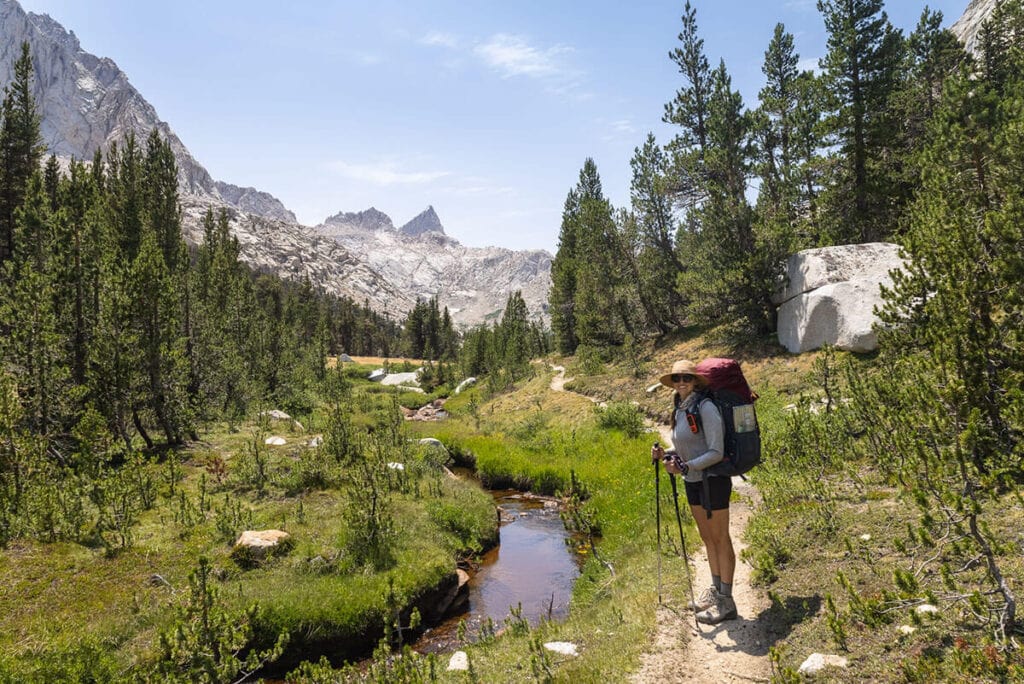 Lightweight backpacking gear helps navigate uneven terrain
Lightweight backpacking gear helps navigate uneven terrain
Tips for Going Ultralight When Backpacking
1. Focus on Items with Multiple Uses
Take a look at every item in your backpack and make sure you know how to maximize their uses. Many items you carry on backpacking trips can have more than one function.
-
A cooking pot can be used as a bowl
-
A sleeping bag stuff sack can double as a pillow once you stuff your puffy jacket into it
-
A bandana can cool you down on hot days, provide shade, or serve as a coffee filter. In an emergency, it can also be used as a makeshift tourniquet
- Hiking pants that roll up or zipper-off into shorts are great for versatility and sudden weather changes.
- Good multi-tools (like the Leatherman Wave Plus) include almost every tool you might need on the trail.
When prepping for a trip, try to switch out super specific items with multi-purpose items wherever possible.
2. Cut the Non-Essentials
Do you really need a coffee mug AND a separate cup for beverages? Lay out all of your gear before packing it up and check to see if you can eliminate at least 1-2 items that are duplicates or unnecessary.
After each backpacking trip, create a list of everything in your pack that you didn’t use. If an item keeps reappearing on this list, CUT IT.
With that being said, first aid and emergency equipment like a GPS satellite communicator are essential and an exception to this ‘cut it’ rule. You can, however, make sure that your first aid kit is not overkill. Learn more about building your backpacking first aid kit in this post.
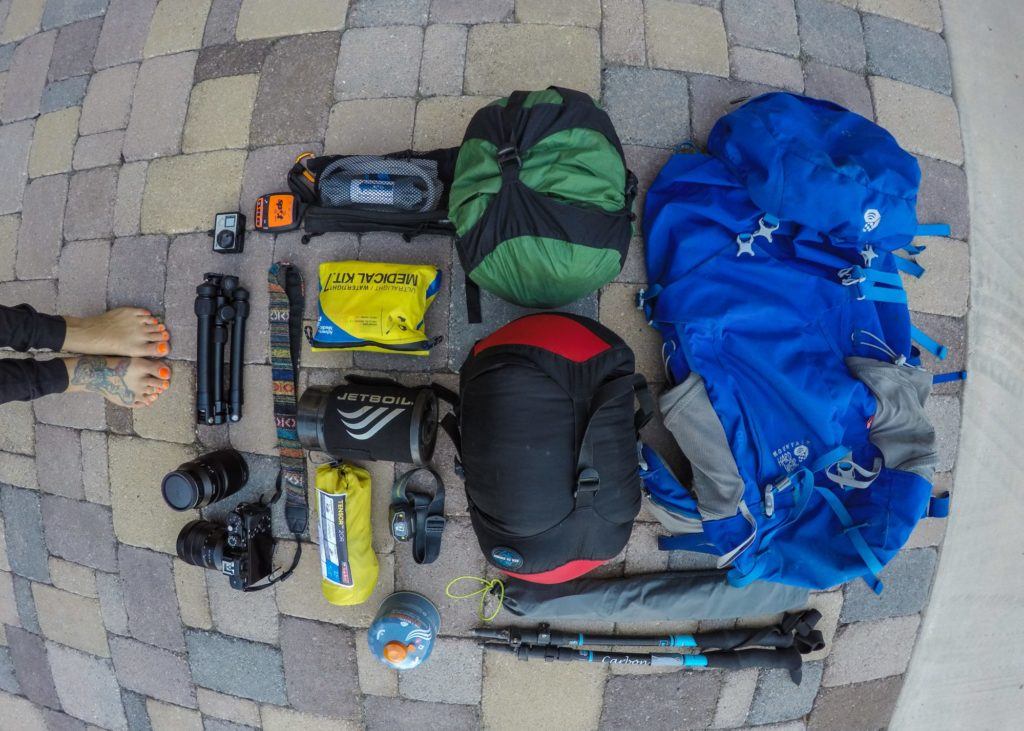 Laying out your gear ahead of time will quickly show you where you might be able to shed weight
Laying out your gear ahead of time will quickly show you where you might be able to shed weight
3. Limit the ‘Spares’
It’s always good to be prepared, but really think about what spares you actually need. When packing your clothes for the backcountry, try to be minimal. Do you need a new outfit each day? Probably not. Also, keep in mind that sweaty clothes can be even heavier to carry than clean clothes.
For most backpacking trips, you only need one base layer, one mid-layer, one insulating layer, and perhaps a rain jacket depending on where you’re heading. Duplicates aren’t necessary unless you are hiking somewhere with extreme weather where you need a backup.
Socks and underwear are the exceptions. It’s good to have 2-3 spares of each.
4. Shed Weight on the “Big Three”
Switching to ultralight backpacking can be EXPENSIVE, but you don’t need to completely makeover your entire gear closet. If you want to make small changes that will have big impacts on your pack weight, start with the big three:
- Tent
- Sleeping bag
- Backpack
Pro Tip: Try to keep your big three under 10 pounds.
While high-quality, lightweight versions of these items can be an investment, once you have them you should be set for years. If you’re in the market for new ultralight backpacking gear, you should also keep an eye out for sales that happen at REI throughout the year. REI’s Anniversary Sale in May, right after the annual dividends are distributed, is a great time to purchase big-ticket items since you can save sometimes 30% or more.
Ultralight Tents
On average, 2-person ultralight backpacking tents today weigh about 2-3 pounds, and every year they seem to get lighter as technology improves. When shopping for a tent, first consider how many people you’ll be camping with. If you sleep solo when you backpack, then opt for a 1-person tent. If you’ll be backpacking with a partner or a friend, a two-person tent can help save weight by divvying up the gear.
Next, ask what kind of weather you’ll be backpacking in most frequently. If you tend to hike in warm, sunny environments, you might consider an ultralight backpacking tarp shelter like the Sea to Summit Escapist Tarp Shelter which utilizes your trekking poles as tent poles. Just make sure you practice setting up your tent before you leave your house since it takes a little skill!
If you need a little more protection from the elements, I love the Zpacks Triplex (3P) when I’m backpacking with my partner, but their Duplex (2P) and Plex (1P) are also great choices for ultralight tents.
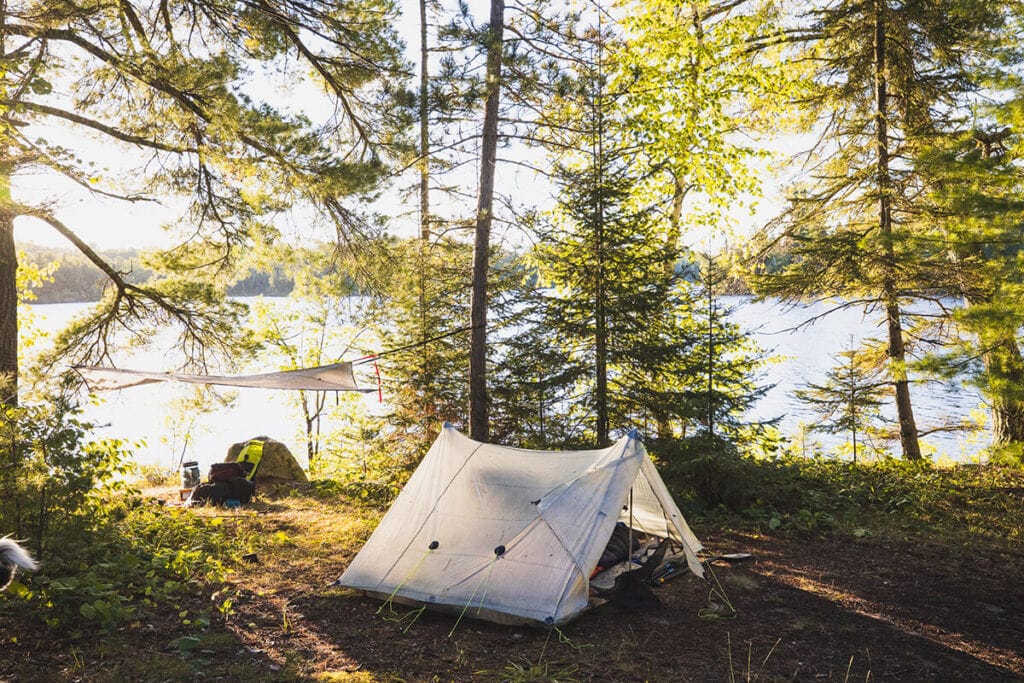 I used the ultralight Z-Packs Triplex Tent in the Minnesota Boundary Waters
I used the ultralight Z-Packs Triplex Tent in the Minnesota Boundary Waters
Ultralight Sleeping Bags
High-quality, lightweight sleeping bags not only shed pack weight, but they also pack down to a minimal size allowing you to pack more efficiently. For your sleeping bag, aim to stay below 3 pounds if possible. Quilts are also a great lightweight option if it’s not too cold where you backpack.
Generally, warmer sleeping bags weigh more (and cost more) because they need more fill to insulate you from the cold. This means you should think about the temperatures you’ll be camping at before investing in a bag. There’s no need to carry a zero-degree bag if you are backpacking in warmer summer temps.
My favorite ultralight backpacking sleeping bag that is an excellent compromise between warmth, weight, AND price is the REI Magma sleeping bag (men’s version here). I took an older model on the John Muir Trail and loved it. For extra space savings in your backpack, stuff your sleeping bag in a compression sack. If you’re looking for an ultralight quilt, my favorite is the Enlightened Equipment Revelation.
Ultralight Backpacking Packs
People often forget that their physical pack, even when empty, weighs something. I’ve been backpacking with the Deuter Aircontact Lite Pack, which is very comfortable and weighs 3 lbs 12 oz, which isn’t super lightweight, but lighter than some other packs out there.
Some ultralight backpacking packs built for thru-hikers barely weigh 2 pounds. These ultralight packs tend to have a smaller capacity and are made for smaller loads. Choosing one of these packs forces you to commit to ultralight backpacking since they become uncomfortable if you try to carry loads more than 35-40 pounds.
Former BFT team member Kim used a ULA backpacking pack on her PCT hike and loved it. Another option is the Hyperlite 4400 Southwest pack, which weighs just 2 lbs 7 oz. You won’t find as many pockets and special features on these packs because they’re designed to be simple and light.
 Wearing the Deuter Aircontact Lite Pack
Wearing the Deuter Aircontact Lite Pack
5. Think in Terms of Ounces
A classic backpacker saying is “Pay attention to the ounces, and the pounds take care of themselves.” — it’s all about ounces when talking about lightweight backpacking. Don’t use averages or estimates – know the exact weight in ounces of every item in your pack, especially when you are purchasing new gear.
“About” 2 pounds doesn’t cut it. Is it really 2 pounds OR is it 2 pounds AND 5 ounces? If you want to get serious about ultralight backpacking, a bathroom or luggage scale will help you with weighing gear. Weigh everything in your pack and get down to the nitty-gritty because all those extra ounces add up quickly!
6. Choose Smart Materials
When choosing lightweight backpacking gear, take into consideration what material the gear is made from. For example, titanium is expensive, but it’s also lightweight and durable. Carbon fiber is lighter than aluminum, but it’s not as durable. Always think about the terrain and conditions you’ll be backpacking in to decide what kind of materials are best.
Another example is synthetic layers vs. cotton clothing. Synthetic is better for hiking because it dries quickly and helps wick the sweat off your body. This means that rather than bringing a bunch of extra clothing, you can hang out your shirt for an hour and it will be dry and ready for the next day. Synthetics are also lighter than cotton, especially when wet.
Research the gear you are buying so you know if it’s both lightweight AND a material that will last.
7. Get Organized
Keep a list of everything in your pack and its weight. We know this sounds a little intense but when you physically see how fast all your gear weight adds up it helps. Lay everything out before it goes into your pack so you can see what you’ll be carrying.
If you have a pack with numerous pockets, have an organization system for what goes where. Being organized will help prevent you from bringing things you don’t need and throwing in extra items on your way out the door just because you have the room in your pack.
 A lightweight pack is an organized pack
A lightweight pack is an organized pack
8. Don’t Carry More Water than You Need
Water is likely to be one of the heaviest things you’ll be carrying. To minimize how much water you need to carry, do your research before setting out to know where on the trail you can expect to find water and pack a lightweight water filter. Then, calculate how much water you need to carry to get you to the next water source.
Pro tip: It’s always a good idea to get updated trail information from the local ranger station or a recent trail report before heading out because you don’t want to find out that the creek you expected to be there is completely dried up.
Another good strategy for minimizing water weight is to carry multiple smaller bottles instead of one giant bottle so you can distribute the weight on either side of your pack. We like collapsible water bottles that get smaller as you drink.
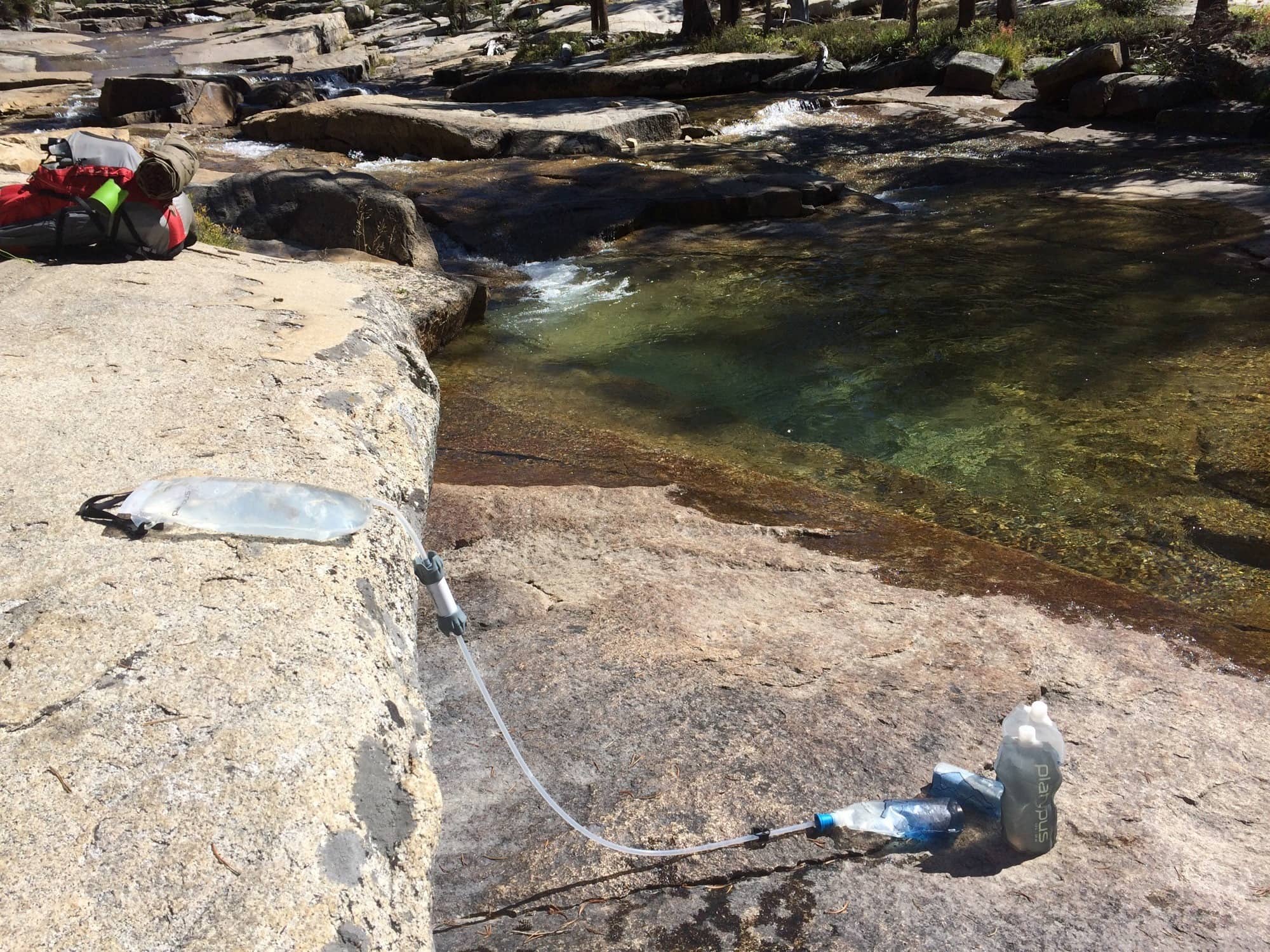 Do research before your trip to determine where your water sources are and how much you need to carry between them
Do research before your trip to determine where your water sources are and how much you need to carry between them
9. Make Healthy Choices
People sometimes focus relentlessly on cutting ounce after ounce off of their packs, yet they don’t consider the weight they are already carrying on their own two feet. Being fit and healthy before heading out on the trail will make your overall experience more enjoyable.
A backpacking trip is a great motivation for squeezing in some training hikes and eating healthy to ensure you’re fit for the trail.
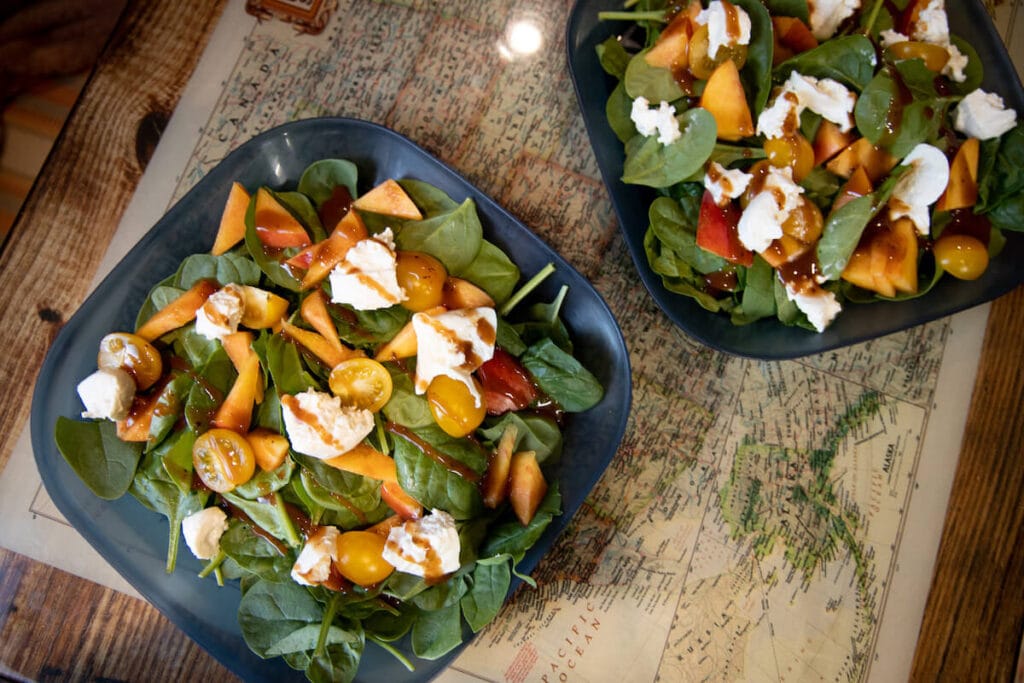 Making healthy choices before backpacking trips will make your trip easier
Making healthy choices before backpacking trips will make your trip easier
10. Plan Your Food Strategically
Food weighs A LOT. Plus, it’s one of the easiest things to overpack. I can’t tell you how many times I’ve gone backpacking with wayyyyy too much food.
Before you head out on your trip, lay out your meals and snacks for each day of your trip. Make one pile for each day that includes breakfast, lunch, dinner, and snacks. This will help you visualize whether you are bringing too much or not enough. If you start with too much, you can then take away the heaviest of your food from your packing list.
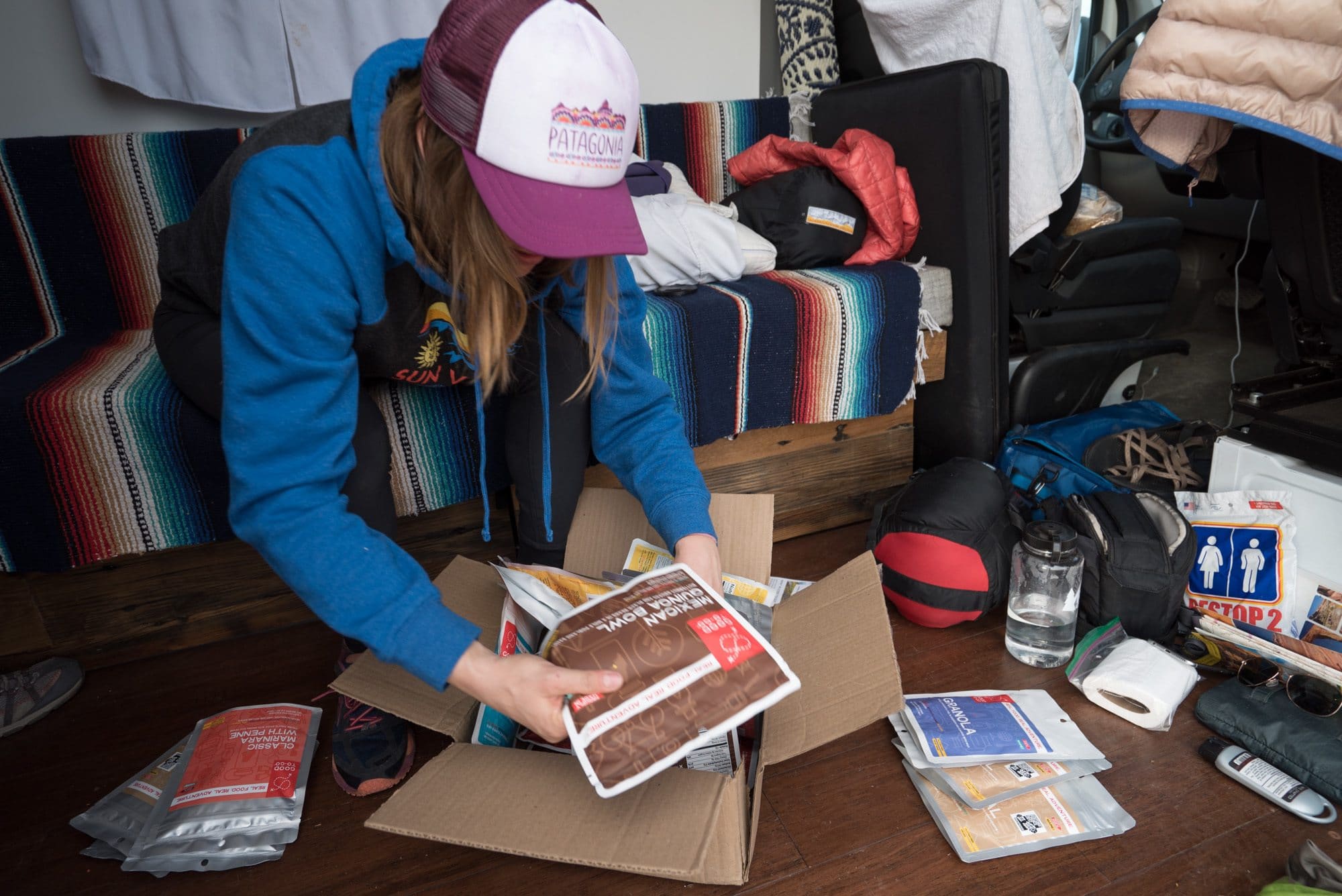 Plan out all of your meals and snacks to avoid carrying excess food
Plan out all of your meals and snacks to avoid carrying excess food
Also, take some time to research lightweight backpacking food options that are still high in calories and protein. While fresh fruit sounds great on the trail, you can pack twice as much dried fruit in the same space, for less weight, and then you don’t have to pack out food waste (such as orange peels and apple cores).
While eating fresh is always preferred, when I’m on the trail, I opt for dehydrated backpacker meals. They take up so little room in your pack, weigh less than anything you might cook from scratch, and the convenience makes them all the more satisfying.
Dehydrated backpacker meals can be expensive, but when you compare all of the ingredients you have to buy if you want to cook from scratch, plus the hassle of doing dishes, it makes it worth it to me.
If you’re super serious about going ultralight and are only going out for a night or two, you can also consider ditching the stove and fuel and eating snacks for all of your meals, which will save you a pound or two.
11. Keep Learning
Hikers and outdoor brands are always coming up with new ways to cut weight when backpacking, so set a goal to learn something new with every hike you take. Look for additional resources and articles and talk to others on the trail to learn their tips and tricks for keeping weight low. Your expertise will continue to grow and your pack weight will reduce with each backpacking trip you take!
And remember…. it’s not a competition. When I was on the John Muir Trail, I heard people constantly comparing their pack weights which drove me nuts. It’s not about who has the lightest pack. It’s about finding the sweet spot between being comfortable while you’re hiking and being comfortable at camp.
Everyone has a different threshold and the more you backpack, the more you’ll learn about what YOU do and don’t need to have an enjoyable hike.
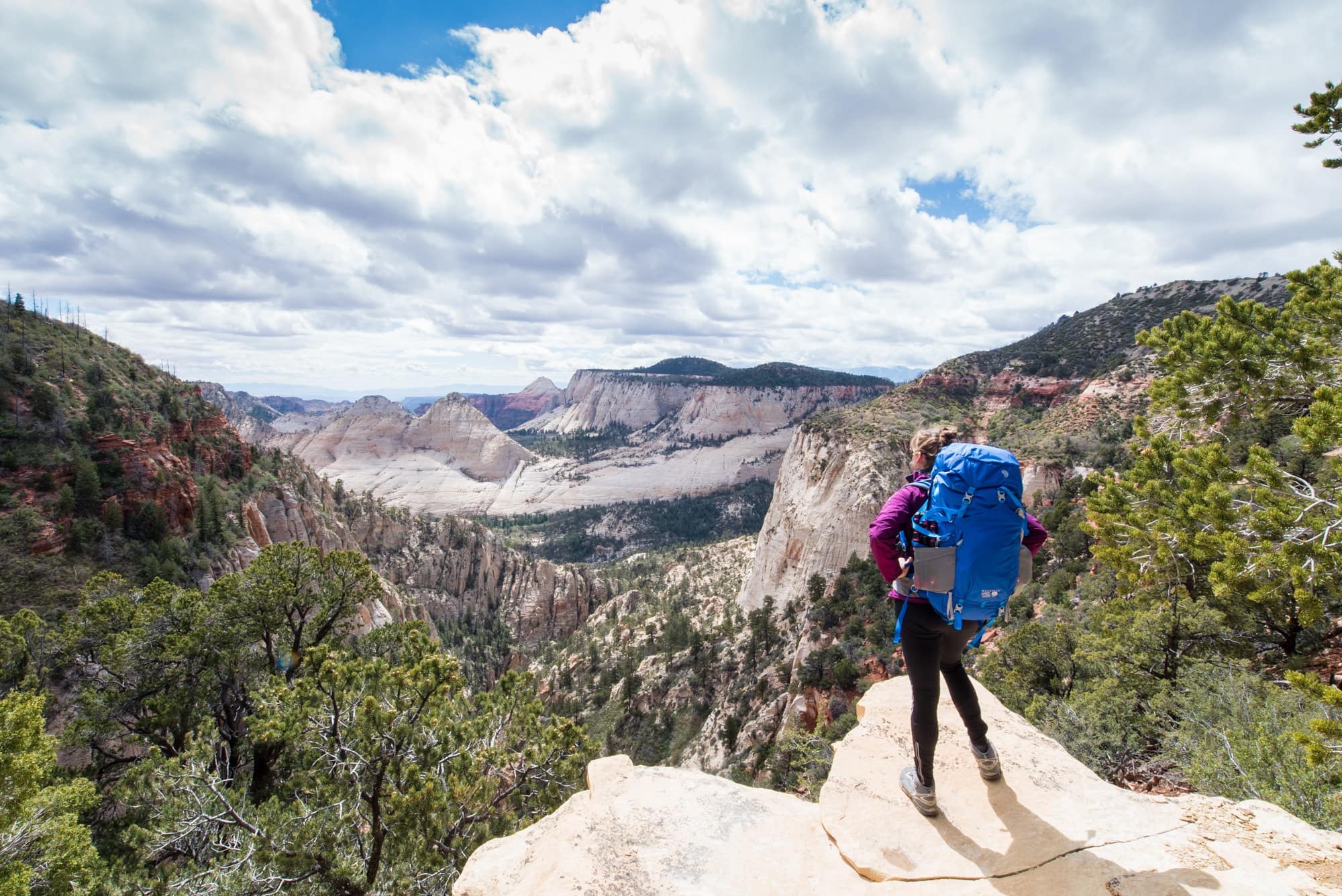 Backpacking the West Rim Trail in Zion National Park
Backpacking the West Rim Trail in Zion National Park
Related















![Toni Kroos là ai? [ sự thật về tiểu sử đầy đủ Toni Kroos ]](https://evbn.org/wp-content/uploads/New-Project-6635-1671934592.jpg)


